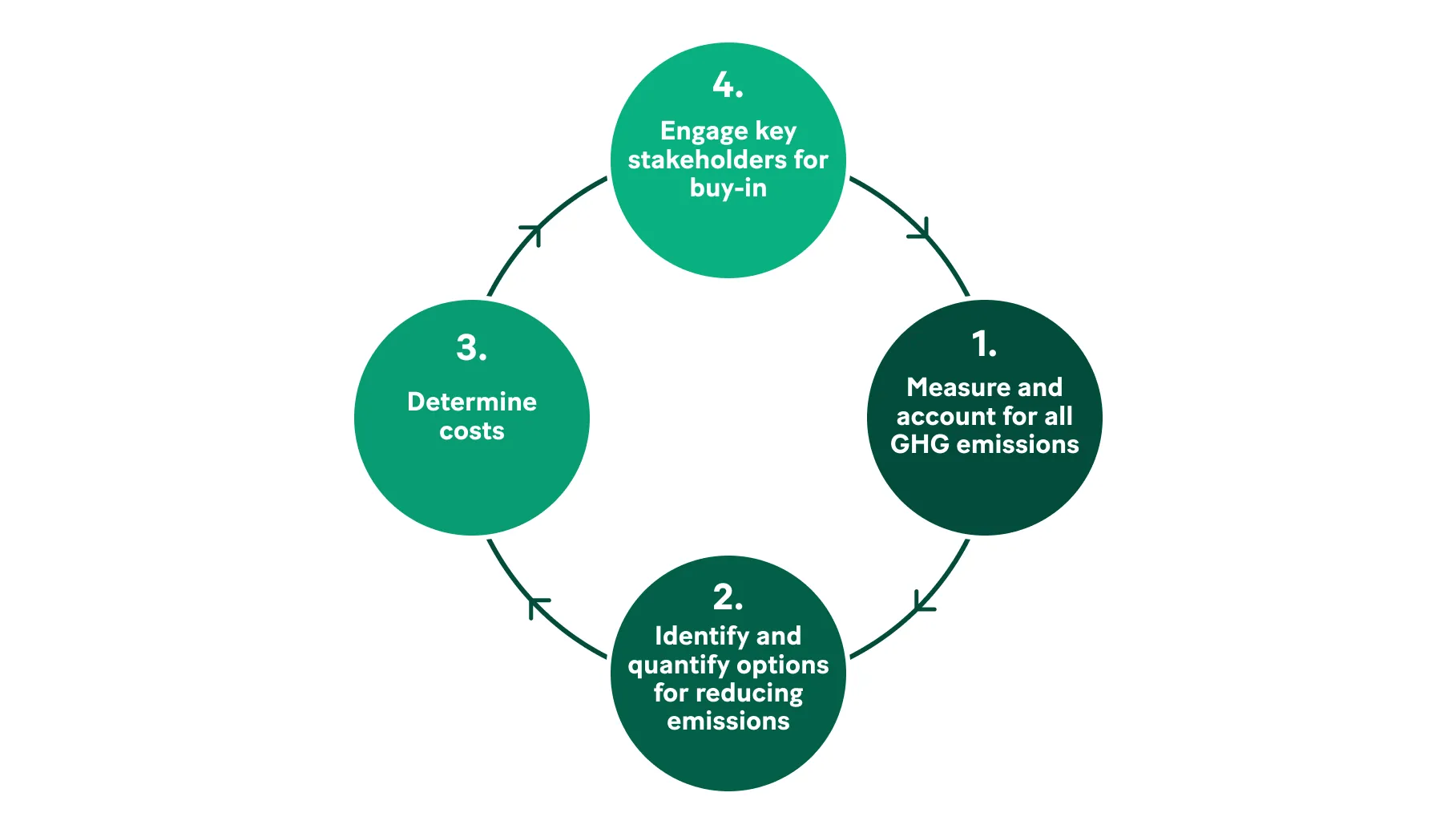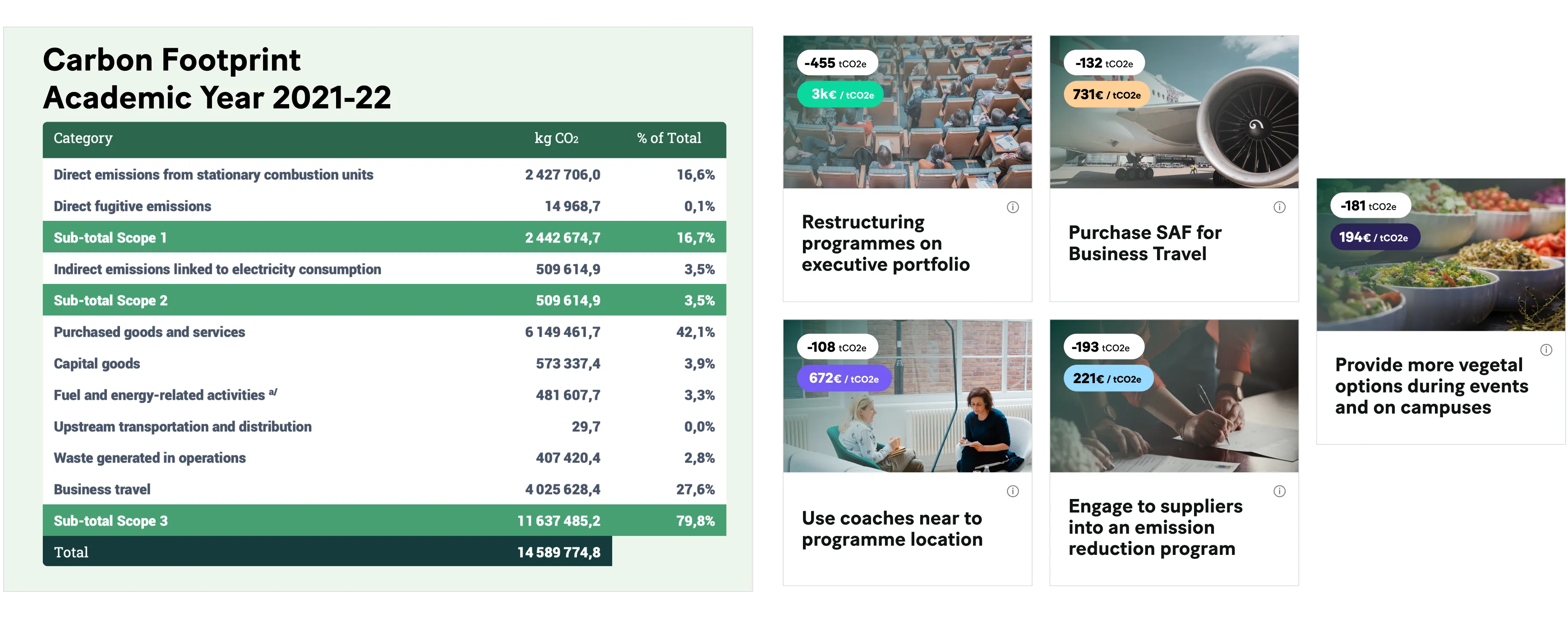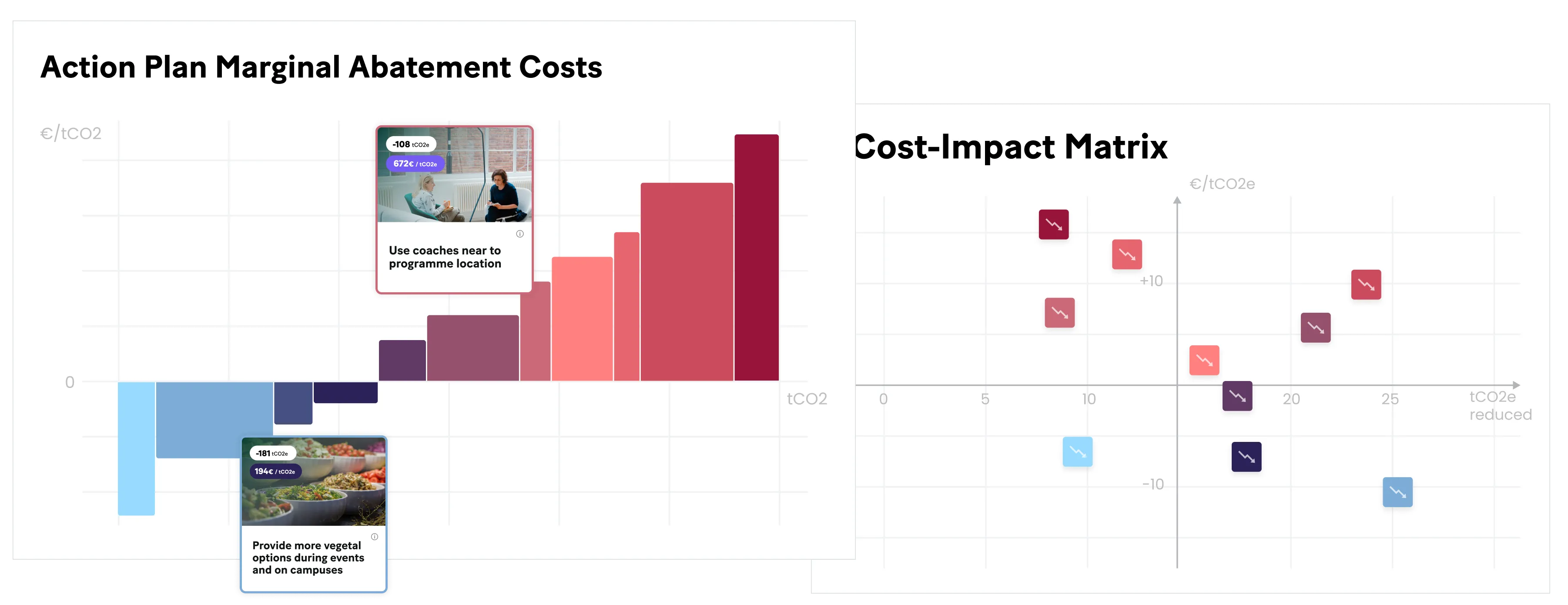How INSEAD financially models its carbon action plan to reduce Scope 3



Developing responsible managers
With a community of over 67,000 alumni from more than 180 countries, and having trained over 230,000 executives since the late 1960s, INSEAD's ambition has always been to train responsible leaders who transform companies and society.
Leading the way in decarbonation in higher education
Eager to put its money where its mouth is, in 2022 the school pledged to reduce its Scope 1 & 2 emissions by 67% by 2035 compared with the reference year 2019. It has also identified and quantified a series of reduction actions that should enable it to achieve these targets.
%201.webp)
Aware of the business, reputational and regulatory stakes involved in making its own transition on all its emissions, INSEAD wanted to amplify its action and raise its ambitions by replicating on its scope 3 the rigorous process that led to the commitments made on scopes 1 & 2.
In the course of this process carried out on scopes 1 & 2, INSEAD noted in particular the difficulty of making forecasts on the potential reductions, costs and ROI of opportunities to decarbonize operations.
INSEAD therefore wished to be supported and equipped with a high-performance tool to answer the following question: How can we accurately measure and effectively reduce our Scope 3?

Reconcile financial data and carbon data
To obtain a precise measurement of Scope 3, Tennaxia worked with INSEAD teams to ensure that all emission items were taken into account, and that the carbon accounting for these items was exhaustive. In addition to the emissions classically associated with Scope 3, specific items were studied in depth and refined through tailor-made surveys of stakeholders.
In order to identify the best decarbonization opportunities open to it and prioritize its action plan on the basis of concrete, precise data, the school wanted to model each emissions reduction action precisely, in terms of both its carbon impact and its financial impact.


organize efficient data collection for all sites and activities impacting scopes 1, 2 and 3.

refine its scope 3 by mobilizing all stakeholders through dedicated questionnaires.

carry out an in-depth analysis of its various indirect emissions sources in order to identify its decarbonization levers.

to define 10 key strategies to accelerate the decarbonization of the school's activities.

model the impact of emission reduction actions in line with these strategic priorities.

obtain a forecast of the potential costs and savings of each action, including the business repercussions of a change in the offer.
Accelerate decision-making on scope 3 decarbonization
The decarbonization actions identified and modeled in Tennaxia therefore include, among others, ways to reduce the need for long-distance travel: adapting the duration and intensity of training programs, localizing certain key skills within the teaching staff or recruiting local coaches.
The INSEAD Scope 3 project steering team has identified and evaluated 23 potential emission reduction levers. These levers are analyzed in terms of ease of deployment, risk to INSEAD's business model and impact in terms of reducing Scope 3 carbon emissions.

Financial modeling through a MAC Curve has facilitated the prioritization of Scope 3 decarbonization actions.

Across all sectors, it is essential that we prioritize the reduction of GHG emissions within our organizations and adopt a transparent approach to reporting them.
With the help of Tennaxia, INSEAD has attained great results in measuring its GHG emissions and identifying potential levers, and it is imperative that we keep up the pace."

Climate Initiatives Manager



.svg)